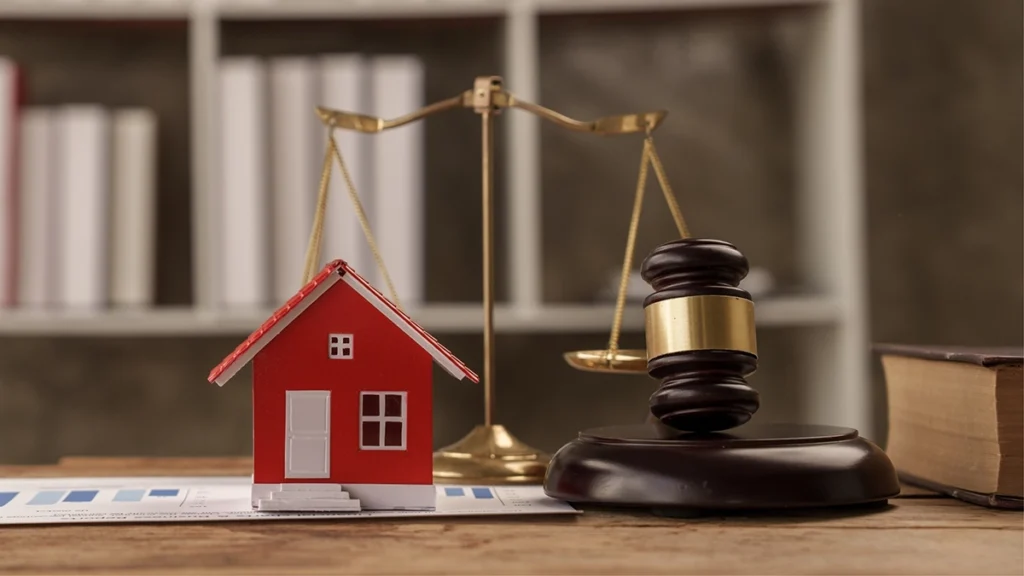When people begin to plan for the future, they often start with that question: how can this home stay in the family without becoming a burden of paperwork, court costs, or confusion?
That search has led many homeowners to something called a Lady Bird Deed, also known as an Enhanced Life Estate Deed. It is not available everywhere, but in the states that recognize it, this single document has helped thousands of families transfer property smoothly and privately to loved ones while keeping full control during life.
It is one of the few legal tools that feels both powerful and compassionate, designed for those who want to keep things simple, clear, and fair.
A Quick Foundation in Plain English
A Lady Bird Deed is a legal document that lets a homeowner keep complete ownership and control during life while naming who will receive the property after death. This is known as an enhanced life estate. The word “enhanced” matters because it means the owner can still sell, refinance, or change beneficiaries without asking anyone for permission.
When the owner passes, the property automatically transfers to the named person or people, skipping the probate court process entirely. The home moves quietly, guided by the deed itself.
What Families Value Most
Homeowners often choose a Lady Bird Deed because it protects what matters most: security, control, time, and peace of mind. It allows them to plan without giving up independence.
1. Control stays with the owner
The heart of this deed is freedom. The owner remains in charge at every step. If life changes, such as a move, refinance, or new plan for the future, they can act without delay or approval. They may sell the home, take out a loan, or even change the beneficiary. Nothing about daily life changes. This flexibility matters because life rarely follows a script. A Lady Bird Deed keeps options open.
Imagine a couple in their seventies who have lived in the same home for decades. They want their daughter to inherit the house but still want the freedom to move or borrow if needed. They record a Lady Bird Deed naming their daughter as the future owner.
Years later, they remodel and take out a small home loan. The lender agrees because they still hold full ownership and control. When both parents pass, their daughter records the death certificate and the title updates quietly in her name. No court, no confusion, and no delay. The home becomes a living gift instead of a legal project.
2. Probate is avoided for the home
Probate can be slow, expensive, and public. A Lady Bird Deed allows the property to transfer outside that system. After the owner’s death, the beneficiary records a death certificate and, in some places, a short affidavit. Title shifts smoothly, usually within weeks instead of months. It means one less court hearing and one less worry for a grieving family.
3. Clear rules reduce conflict
Uncertainty can create tension in even the closest families. A Lady Bird Deed makes transfer rules unmistakably clear. It identifies who receives the home and how the transfer works, taking precedence over any conflicting terms in a will. Heirs understand what will happen, and title companies know how to process it.
That clarity gives everyone confidence. In many families, it becomes its own quiet act of love.
4. Privacy increases
Probate records are public, but a deed transfer is mostly private. The only things recorded are the deed itself and, later, the title update. There is no lengthy court file listing debts or assets. For many families, that privacy feels respectful. It is a quiet, dignified way to close one chapter and begin another.
5. Simple compared to other tools
Trusts are powerful but can require ongoing management. A Lady Bird Deed is often a single document, created and recorded once, with no annual upkeep. Many families use it for their home while relying on a will or beneficiary designations for other assets. The result is a plan that feels simple, practical, and easy to follow.
How a Lady Bird Deed Works, Step by Step
- Drafting: The deed includes the full legal description of the property and names the current owner as life tenant with enhanced rights. It also names who will receive the property next, called the remainder beneficiaries.
- Signing: The owner signs before a notary and, in some states, witnesses. These formalities make the document legally binding.
- Recording: The signed deed is filed with the county land records, giving public notice of the future transfer.
- During life: The owner keeps full control. They may sell, refinance, lease, or replace beneficiaries by recording a new deed.
- At death: Ownership automatically shifts to the beneficiaries. They record the death certificate and, where required, a short affidavit. Title updates to their name without probate.
State Availability
Lady Bird Deeds are recognized in a limited number of states, including Florida, Texas, Michigan, West Virginia, Vermont, and North Carolina. In other places, families may use tools such as Transfer on Death Deeds or living trusts to achieve similar results. Each state sets its own rules for signatures, fees, and how the deed interacts with Medicaid or homestead protections. Checking your state’s law is the first step.
How It Fits with Wills, Mortgages, and Taxes
Wills and priority
A will directs property through probate. A Lady Bird Deed bypasses probate entirely. For the home covered by the deed, it takes priority even if the will says something different. Most families still keep a will for everything else such as cars, jewelry, personal belongings, and accounts without beneficiaries.
Mortgages and lenders
Because the owner retains full control, existing mortgages remain unaffected. The owner continues making payments as usual. If they sell, the process looks like any other sale. If they refinance, the lender works directly with them since the life tenant holds the power to convey and borrow.
Property taxes and basis
In most counties, a homeowner keeps homestead benefits while alive since nothing about occupancy or control changes. After death, heirs often receive a “step-up in basis,” meaning they inherit the property at its market value at the time of death. This can reduce taxable gain if they sell shortly after. Because tax rules vary, it is best to confirm details with a qualified tax professional.
Insurance and upkeep
The owner keeps the property insured during life. After the transfer, the new owner updates the policy, mailing address, and utilities to keep coverage and services current.
Choosing Beneficiaries with Clarity
The deed can name one or several beneficiaries. Some owners include survivorship language so the last surviving beneficiary receives the full property. Others prefer per stirpes wording so that if one beneficiary dies, their share passes to their children. These options reflect the natural ways families live, plan, and care for one another.
Pairing with Other Planning Tools
A Lady Bird Deed focuses on real estate. For a complete estate plan, families often pair it with other tools. A will can direct personal property. Beneficiary designations can manage bank or retirement accounts. A trust can organize multiple properties or special assets. Each piece plays a role, and together they create a plan that is flexible and complete.
Medicaid and Estate Recovery, at a Glance
In some states, such as Florida and Texas, families use Lady Bird Deeds as part of long-term care planning. The owner keeps control during life, and the home may pass outside probate when they die. Certain states limit Medicaid estate recovery against property that avoids probate, but these laws differ and can change. It is best to confirm current rules with a licensed attorney familiar with state-specific guidance.
Costs, Timing, and Effort
A Lady Bird Deed is usually simpler and more affordable than a trust. It requires an accurate legal description, signatures, notarization, and county recording. Most counties charge modest recording fees, and some states add documentary stamp or transfer taxes. Once recorded, no further maintenance is required. When the time comes, heirs record the death certificate and the title transfer is complete. It is quick, clear, and cost-effective.
Why This Tool Feels Family First
Families often describe a deep sense of relief after recording this deed. It removes future obstacles and provides peace of mind. Caregivers know what to do. Children and grandchildren have clarity. Parents feel secure knowing their home will stay in trusted hands. A Lady Bird Deed is not just a legal document. It is an act of care, a way of saying, “I’ve planned ahead so you don’t have to worry later.”
Key Takeaways
- Control: The owner keeps full control during life and can sell, refinance, or change beneficiaries at any time.
- Probate: The home transfers outside probate at death, saving time and money.
- Clarity: The deed takes priority over a will for the property it covers, reducing family disputes.
- Availability: Recognized in Florida, Texas, Michigan, West Virginia, Vermont, and North Carolina.



